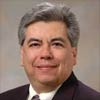Faculty at Doctoral/Research Institutions
Job Prospect Profile
What They Do
Physicists in academia wear many hats, often at the same time. Most academics spend time doing the following:- Direct, conduct, and publish research, usually in collaboration with their students, postdocs, and other scientists.
- Procure funding for research.
- Teach physics courses.
- Participate in the governance and administration of their department or institution.
Education & Background
The path begins with a Bachelor's and PhD in physics or a closely related discipline like engineering or mathematics, with a major emphasis in physics.
While working on a PhD—which can take between five and ten years—students build the foundation for their careers, including the basic physics knowledge and important technical skills needed to succeed. Students will also publish the research they conducted with their advisors.
Additional Training
After graduation, the next step is usually a postdoctoral position (or two) in a research laboratory (academic, government, or corporate) that lasts two to four years. Here, postdocs establish their own identity as a scientist and take more responsibility of the direction and publication of their research.
Few people remain in the same sub-field, and this is a good time to branch out and seek new knowledge and skills. The postdoc phase can last longer in order to accumulate the expertise and publications needed to move on.
Traditionally, graduate school and postdocs focus almost exclusively on research, but the savvy modern physicist who aspires to an academic career must seek opportunities to teach physics and learn about science education. Examples include teaching assistantships, attending teaching seminars and workshops as a student, and co-teaching as a postdoc. For those expecting to focus primarily on teaching, a sabbatical replacement or other temporary instructional position is an alternative to the research postdoc route.
Career Path
Physicists in academia typically start as an assistant professor at an academic institution, either at a Doctoral/Research University (which tend to have more of a research focus), or a Baccalaureate-Granting Institution (which tend to have a greater focus on teaching). At research universities, expectations for research, publications, and external funding are higher than at liberal arts colleges. The assistant professorship phase may last six years.
Assistant Professors must demonstrate excellent teaching, research, and service to the institution. The institution will provide the environment necessary for success—space, equipment, physical and administrative infrastructure, mentors—while the AP will focus on generating ideas and bringing them to fruition in the lab and the classroom.
After six years and a very rigorous external and internal review, indefinite tenure may be awarded. Tenure carries the prize of freedom to pursue a physics career forever with a degree of independence unattainable in virtually any other setting. It also carries responsibility to work even harder to keep research current and vibrant, and to take on leadership roles. You will work with young people and with cutting edge science every day—few people are so lucky!
Additional Resources
APS Webinar: Landing Your First Physics Teaching Job
APS Webinar: Physics Faculty Positions in Colleges
![]()
Education
PhD in physics or related field
![]()
Additional Training
Postdoctoral positions, teaching assistantships, published research
![]()
Salary
Starting
$45,000 - $55,000
![]()
Outlook
Less than 20% of grads will hold permanent faculty positions
Physicists Profiles

Alicia Soderberg
Alicia once wanted to be an environmental scientist, but she fell in love with looking at the stars in the night's sky.

Carlos Gutierrez
Carlos is a materials scientist inspiring students and finding materials to make devices work better.

Edward Thomas
Edward admits that physics is hard, but there are many exciting projects that make all the work worthwhile.

Jax Sanders
Jax learns new things everyday as an Assistant Professor of Physics that designs and improves gravitational wave detectors.
